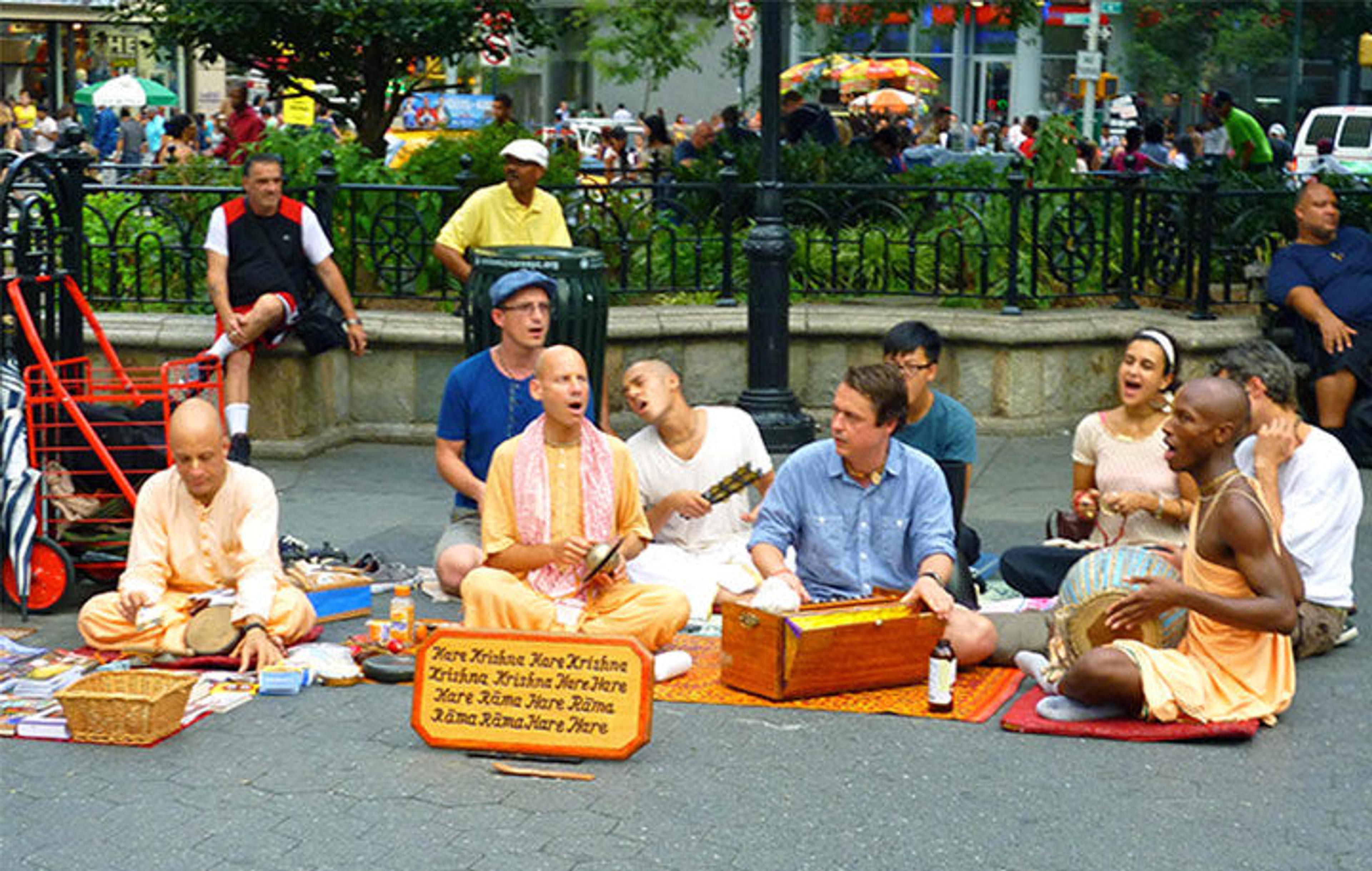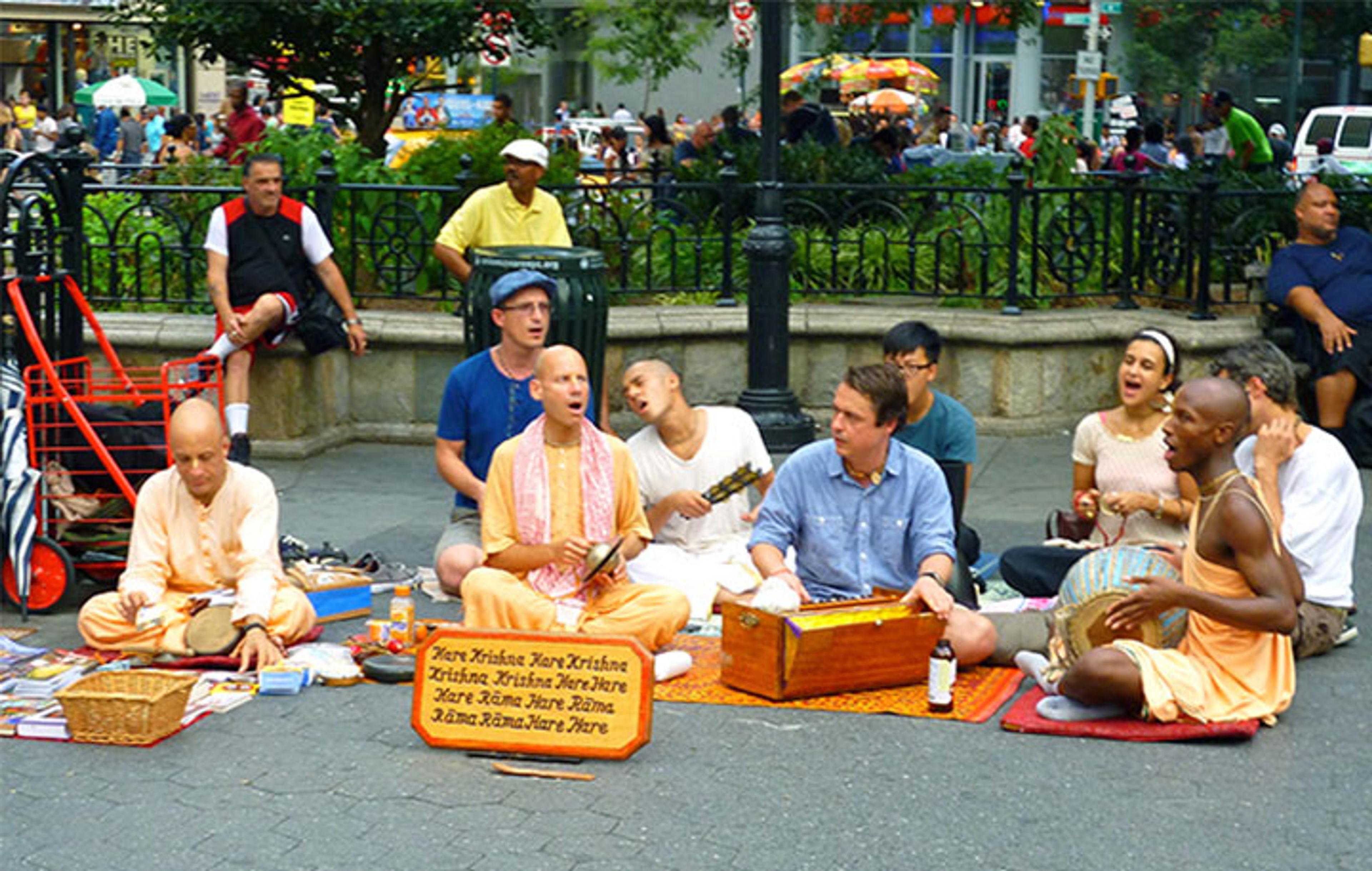
Members of the International Society for Krishna Consciousness (ISKON) gather together in Manhattan's Union Square. Image courtesy of Google Images
«While commuting home on a recent evening, I was making my way through Union Square when I passed by a large, jovial singing group of members from the International Society for Krishna Consciousness (ISKCON), better known as Hare Krishna. While I have seen this group many times, on this occasion their mantra, "Hare Krishna, Hare Rama," piqued my attention, as it made me think of the paintings in The Met's exhibition Divine Pleasures: Paintings from India's Rajput Courts—The Kronos Collections, which overwhelmingly features depictions of the various incarnations of the god Vishnu, especially the forms of Rama and Krishna.»
The Rajput patrons from the 16th through 19th century who commissioned the paintings displayed in this exhibition were dedicated Vaishnavas, or worshippers of the Hindu god Vishnu. Known as the Preserver or the Protector, Vishnu is believed to have 10 avatars (das avatara), including those of a boar and a fish. In these forms, Vishnu goes to great heroic length to save the earth from demons and other evil forces.
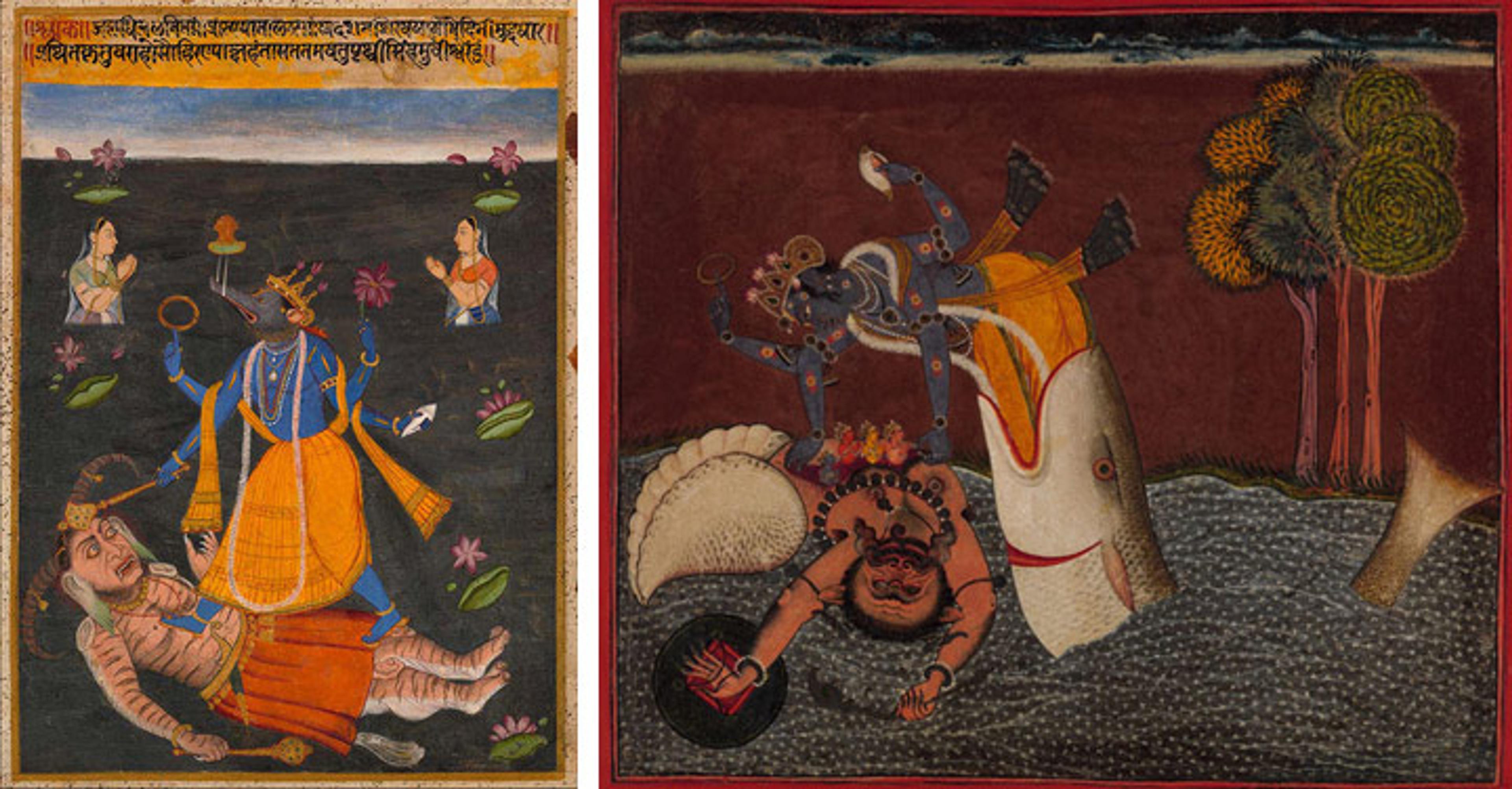
Left: "Varaha, the Boar Incarnation of Vishnu, Saves the Earth," Illustrated folio from a dispersed Vishnu Avatara (The Incarnations of Vishnu), ca. 1650. India, Bikaner, Rajasthan. Opaque watercolor and gold on paper; Page: H. 12 in. (30.5 cm), W. 9 1/16 in. (23 cm), Painting: H. 10 1/8 in. (25.7 cm) W. 7 1/8 in. (18.1 cm). Promised Gift of the Kronos Collections, 2015. Right: "Matsya, the Fish Incarnation of Vishnu, Slays the Conch Demon," Folio from a Vishnu Avatara (The Incarnations of Vishnu), ca. 1700. India, Basholi, Punjab Hills. Opaque watercolor, gold, and applied beetlewing cases (for jewelry) on paper; H. 6 1/4 in. (15.9 cm), W. 7 1/8 in. (18.1 cm). Promised Gift of the Kronos Collections, 2015
Among Vishnu's best-known manifestations are Krishna and Rama, whom the ISKCON invoke through song. The stories of Krishna, the eighth incarnation, are extensively recorded in book 10 of the Bhagavata Purana (Ancient Story of God). Tales of Krishna's childhood and his divine powers are recorded here, as well as some of his more playful acts, such as the episode where he mischievously stole the clothing from the bathing milkmaids (gopis) and hid in a tree.
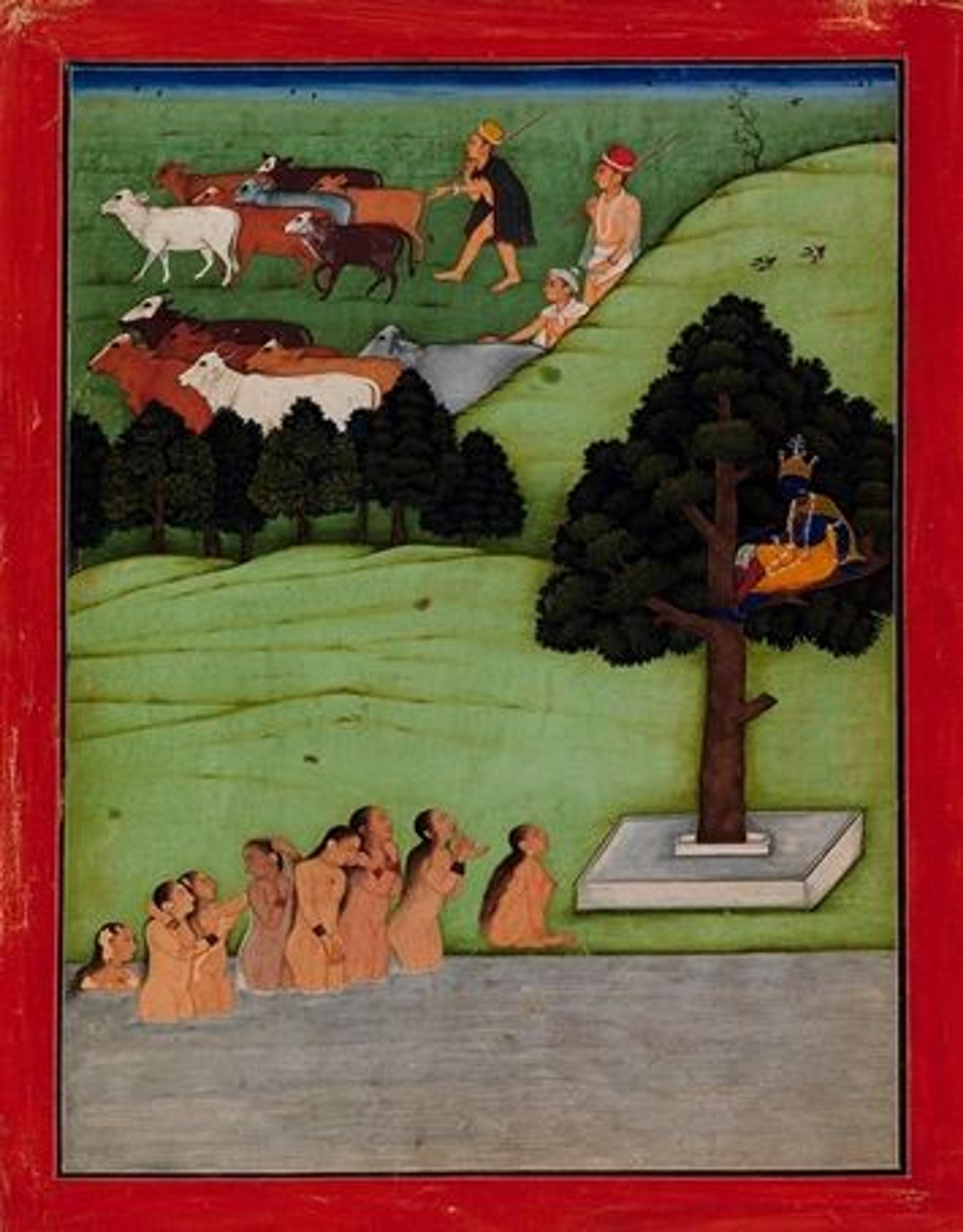
Left: Attributed to The Early Master at the Court of Mandi. "Krishna Steals the Clothing of the Gopis (Cow Maidens)," Folio from a dispersed Bhagavata Purana (The Ancient Story of God), ca. 1640. India, Mandi, Punjab Hills. Opaque watercolor and gold on paper; Page: H. 13 3/8 in. (34 cm), W. 9 7/16 in. (24 cm), Painting: H. 11 7/8 in. (30.2 cm), W. 8 in. (20.3 cm). Promised Gift of the Kronos Collections, 2015
Artists in the Rajput Courts also depicted Rama, the seventh incarnation of Vishnu, in illustrations of the Ramayana (History of Rama). Composed around 300 B.C. by the poet Valmiki, the Ramayana is largely devoted to Rama's quest to rescue his beloved Sita from the grasp of the evil king Ravana, as well as other episodes involving the monkey army.
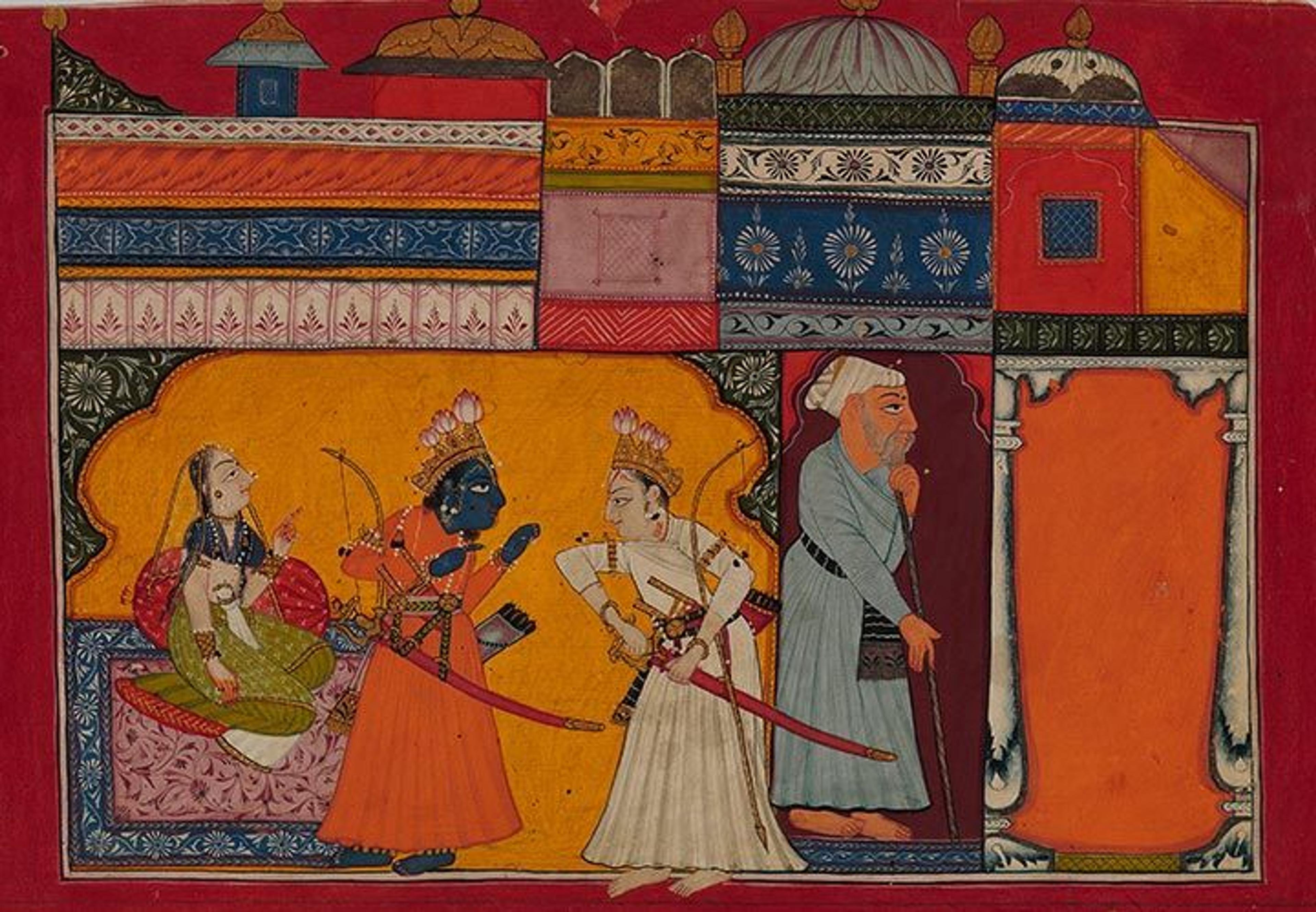
Attributed to the Early Bahu Master. "Rama Commands Lakshmana to Take Sita Away," Illustrated folio from the "Shangri" Ramayana (The Adventures of Rama) (Style I), ca. 1675–90. India, Jammu (Bahu), Punjab Hills. Opaque watercolor, silver and gold on paper; Page: H. 8 1/2 in. (21.6 cm), W. 11 7/8 in. (30.2 cm), Painting: H. 6 3/8 in. (16.2 cm), W. 10 1/8 in. (25.7 cm). Promised Gift of the Kronos Collections, 2015
The ISKCON devotees that I saw in Union Square follow a line of teaching founded by Chaitanya Mahaprabhu (1486–1534) in the Gauda region of West Bengal, India. Chaitanya is believed by some to be another earthly manifestation of Krishna, and is associated with fervent faith. In the painting from the Kronos Collections below, the saint is depicted dancing in a pool of devotional tears at the center of a circle of eight ecstatic devotees, who look rather like the ones I saw downtown. The Divine Pleasures exhibition not only illustrates the long history of Vaishnavas, but also showcases the beautiful devotional art patronized and enjoyed by this group.
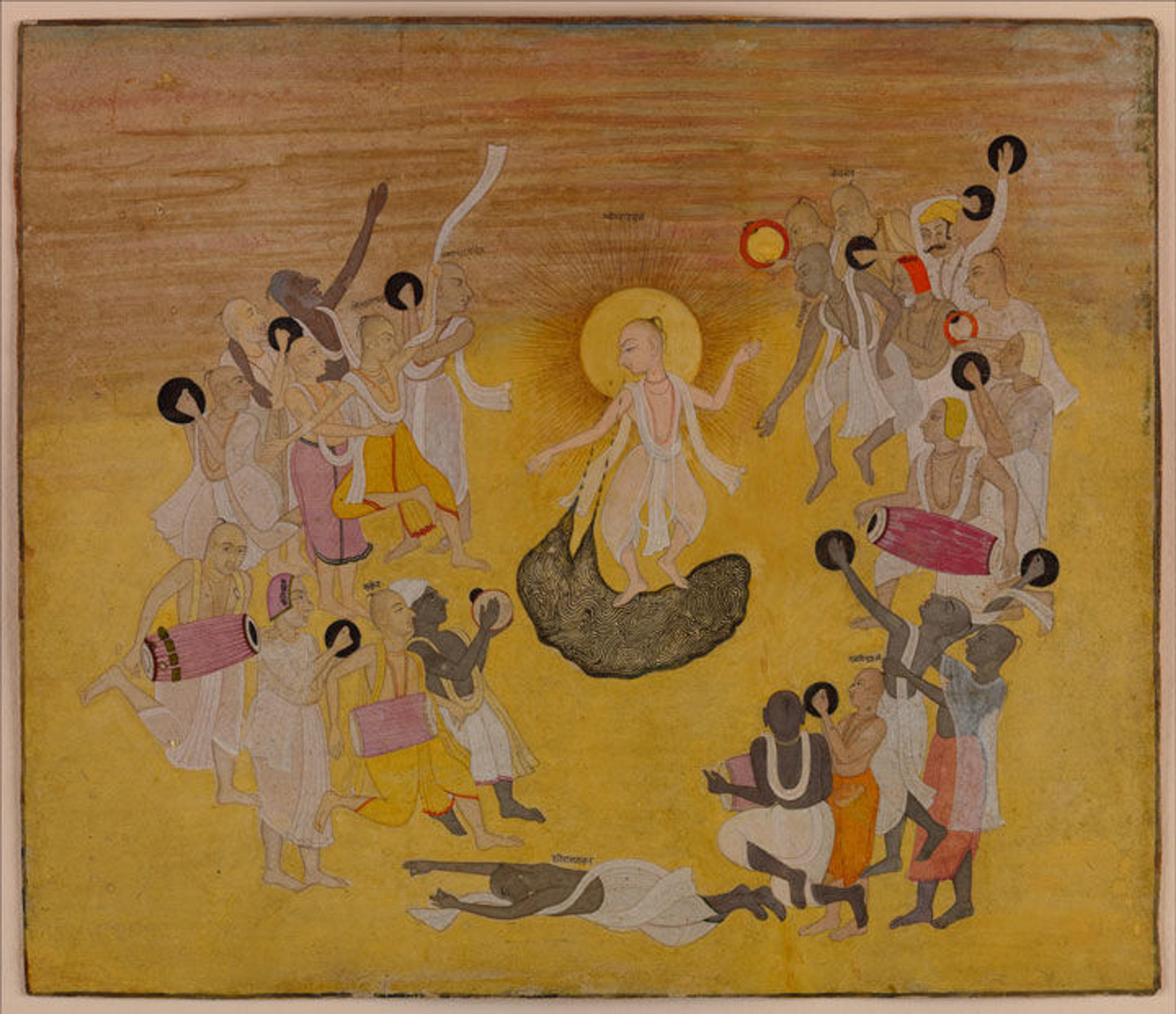
Chaitanya Dances in Ecstasy, ca. 1750. India, Kishangarh, Rajsathan. Opaque watercolor on paper. Promised Gift of the Kronos Collections, 2015
Related Links
Divine Pleasures: Painting from India's Rajput Courts—The Kronos Collections, on view at The Met Fifth Avenue through September 12, 2016
RumiNations: Maryam Ekhtiar, "Splatters of Blood" (June 28, 2016)
